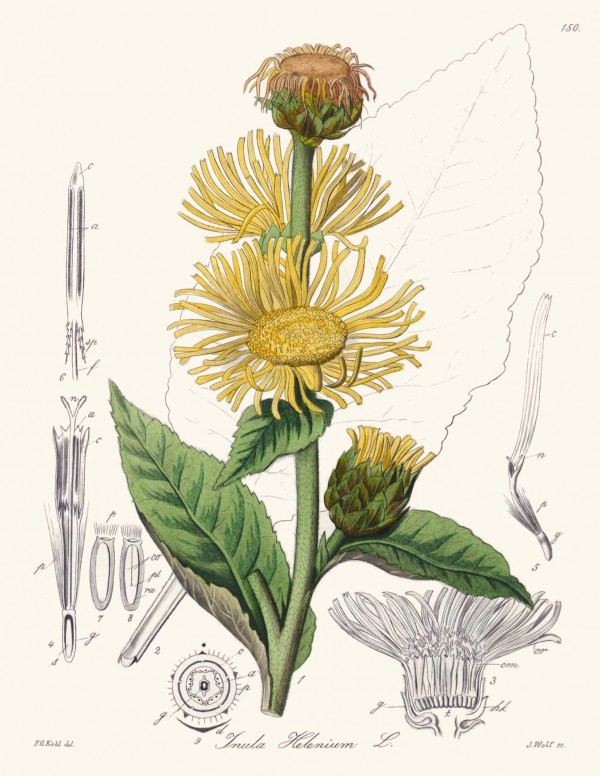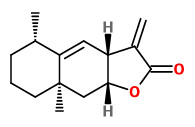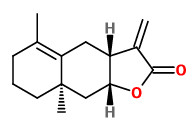Inula helenium L. - syn. Helenium grandiflorum Gilib., Aster officinalis All., Aster helenium (L.) Scop. - Asteraceae
elecampane, enulae, Echter Alant, Helenenkraut
Perennial plant of Europe and West Asia; up to 2m tall, bright yellow flowers 5 cm broad.
„The plant's specific name, helenium, derives from Helen of Troy; elecampane is said to have sprung up from where her tears fell. It was sacred to the ancient Celts, and once had the name „elfwort“… The root was employed by the ancients, mentioned in Pliny, Natural History 19.29 both as a medicine and as a condiment, and in England it was formerly in great repute as an aromatic tonic and stimulant of the secretory organs.“ http://en.wikipedia.org/wiki/Elecampane
„The roots of Elecampane (Helenii radix) have been used as a flavoring for sweets and bitters since ancient times because of their bitter, resinous taste … In folk medicine, Elecampane was also very popular and has been used in conditions such as bronchial catarrh, coughs, flatulence, urinary retention, gastrointestinal complaints, jaundice, and worms.“ http://de.wikipedia.org/wiki/Echter_Alant
„The chemical composition of the Elecampane (Inula helenium L.) oil was analyzed by means of GC/MS. Besides the already known alantolactones alantolactone (52.4%) and isoalantolactone (33.0%), additional fifteen minor constituents were also identified in the oil. The essential oil sample and a hexane extract were subjected to microbiological screening against five bacteria and seven fungi and these results were compared to natural compounds known for their antimicrobial activities.“
[Chemical Analysis, Bacteriostatic and Fungistatic Properties of the Essential Oil of Elecampane (Inula helenium L.), C. Bourrel, G. Vilarem, F. Perineau, Journal of Essential Oil Research, Vol.5 (4), 1993, 411-417]
Root volatiles of I.helenium are dominated by sesquiterpenoids (90%), with eudesmane-type sesquiterpene lactones like alantolactone (55.8%), isoalantolactone (26.3%), and diplophyllin (5.1%) as main components. Monoterpenes represented only 0.2% of the oil. Minor compounds were e.g., dihydro-2-methyl-3-furanone, geranyl 2-methylbutyrate, dehydro-1,8-cineole, and 1-decene.
[Stojanović-Radić, Zorica, et al. „Antistaphylococcal activity of Inula helenium L. root essential oil: eudesmane sesquiterpene lactones induce cell membrane damage.“ European journal of clinical microbiology & infectious diseases 31.6 (2012): 1015-1025]

Kohl, F.G., Die officinellen Pflanzen der Pharmacopoea Germanica, t.150 (1891-1895)
http://plantillustrations.org/species.php?id_species=555269
Inula helenium
© Rolf Marschner (2009),
www.botanische-spaziergaenge.at

